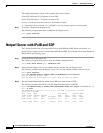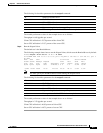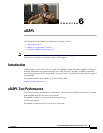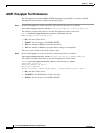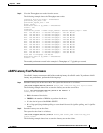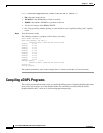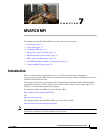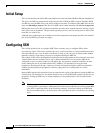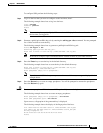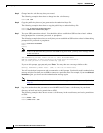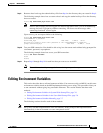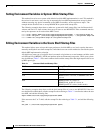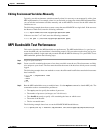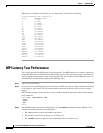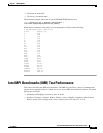
7-2
Cisco SFS InfiniBand Host Drivers User Guide for Linux
OL-12309-01
Chapter 7 MVAPICH MPI
Initial Setup
Initial Setup
This section describes the initial MPI setup. MPI can be used with either IPoIB or Ethernet IP addresses.
The drivers for MPI are automatically loaded at boot time if IPoIB or SDP is loaded. If neither IPoIB
nor SRP are used, the MPI drivers can still be loaded at boot time. To enable loading MPI driver at boot
time, run chkconfig ts_mpi on. The drivers for MPI can be loaded manually with service ts_mpi start.
MPI requires that you be able to launch executables on remote hosts without manually entering a login
name, password, or passphrase. This procedure typically involves a one-time setup on one or more of the
hosts that you want to use.
Although many technologies are available to meet this requirement, this chapter describes one method:
how to set up SSH for password-less logins.
Configuring SSH
This section describes how to configure SSH. There are many ways to configure SSH to allow
password-less logins. This section describes one way; your local policies or system administrators may
advocate different ways. Any of them are sufficient as long as you can log in to remote nodes without
manually entering a login name, password, or passphrase during the MPI run.
The example in this section distinguishes between passwords and passphrases. Passwords are associated
with usernames and are normally used to log in and/or authenticate a user on a node. SSH can be
configured to log in to remote nodes by using public key encryption to establish credentials on those
nodes, making the use of passwords unnecessary. SSH keys can optionally be encrypted with
passphrases, meaning that the keys cannot be accessed (and automated logins cannot be performed)
without providing the proper passphrase, either by typing them in or caching them in a secure
mechanism.
Because MPI requires fully automatic logins on remote nodes, typing of passphrases during the MPI run
is disallowed. For simplicity, the text below describes how to set up SSH with a public key that uses no
passphrase. Setting up SSH to use a cached passphrase is also permitted but is not described in this
document.
Note The instructions in this section assume that you have never set up SSH before and have no
existing public or private keys. Additionally, the instructions assume that you always launch MPI
jobs from a single host (host1 in the following example). If you have already used SSH with
key-based authentication, you should not use this procedure because it overwrites your existing
keys.



